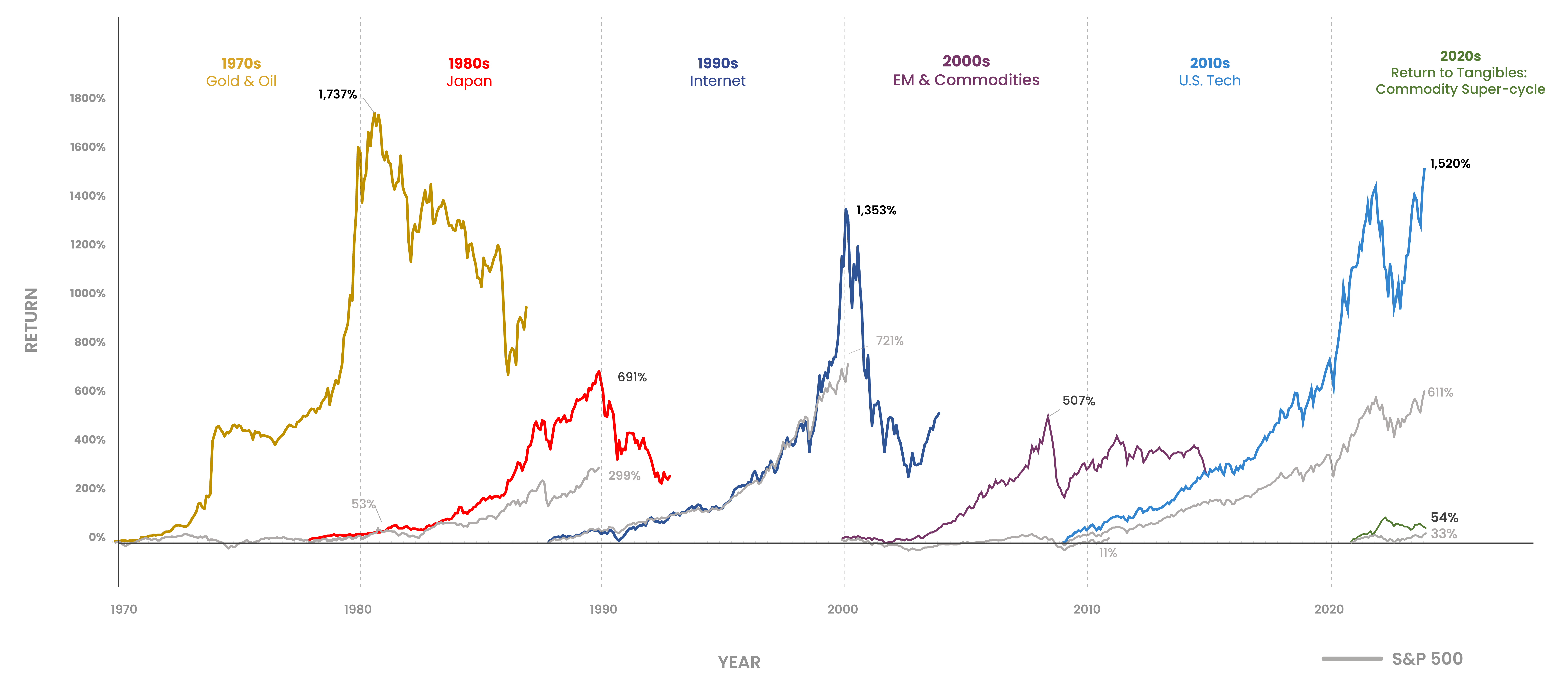 The present is the past rolled up for action, and the past is the present unrolled for understanding.”
The present is the past rolled up for action, and the past is the present unrolled for understanding.”
Will & Ariel Durant
 History doesn’t repeat itself, but it often rhymes.”
History doesn’t repeat itself, but it often rhymes.”
Mark Twain
Sarmaya Thematic Strategy - Since October 2020
Our investment approach is anchored in the insight that market cycles are driven by dominant themes that generate outsized returns over several years, before eventually declining and making way for new themes.
These market themes typically result from major macro-economic shifts, new secular regimes, or eras of innovation and are typically born in areas of the market that have been underappreciated or ignored for a prolonged period, likely because of a structural consolidation from a prior theme high. Examples are inflation in the ‘70s, ‘90s internet, and the ‘10s zero-interest-rate environment. Additionally, themes often contain shifting sub-themes through the cycle.
By building a concentrated portfolio focused on the primary theme and actively managing it through its evolving sub-themes, we aim to harness these multi-year trends for an outsized impact on portfolio returns.
Market Theme History

Investment Framework Overview
Investment Framework Overview
Theme Identification
Our process rests on a deep understanding of the macroeconomic forces shaping market cycles. These include monetary and fiscal policies, market liquidity & credit conditions, as well as technological innovations. We then identify potential catalysts capable of either disrupting the current market paradigm or reinforcing it.
Portfolio Construction
We seek out theme exposures via underappreciated asset classes, sectors or regions of the market, building a focused portfolio of investments expected to be at the forefront of the theme and its sub-themes.
Dynamic Management
Our active management approach seeks to manage the portfolio through the theme’s evolution, opportunistically adjusting exposure to capture surging sub-themes.

